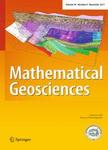版权所有:内蒙古大学图书馆 技术提供:维普资讯• 智图
内蒙古自治区呼和浩特市赛罕区大学西街235号 邮编: 010021

作者机构:McGill Univ Montreal PQ H3A 2A7 Canada
出 版 物:《MATHEMATICAL GEOSCIENCES》 (数学地质学)
年 卷 期:2010年第42卷第1期
页 面:101-127页
核心收录:
学科分类:0709[理学-地质学] 081803[工学-地质工程] 07[理学] 08[工学] 0708[理学-地球物理学] 0818[工学-地质资源与地质工程] 0701[理学-数学]
基 金:Consorcio Mexicano Flotus-Nanuk Department of Earth and Planetary Sciences Geological Society of America, GSA McGill University Natural Sciences and Engineering Research Council of Canada, NSERC Consejo Nacional de Ciencia y Tecnología, CONACYT
主 题:Evolutionary programming Heuristic optimization Inverse modeling Surface complexation modeling and calibration Adsorption equilibria
摘 要:The application of a powerful evolutionary optimization technique for the estimation of intrinsic formation constants describing geologically relevant adsorption reactions at mineral surfaces is introduced. We illustrate the optimization power of a simple Genetic Algorithm (GA) for forward (aqueous chemical speciation calculations) and inverse (calibration of Surface Complexation Models, SCMs) modeling problems of varying degrees of complexity, including problems where conventional deterministic derivative-based root-finding techniques such as Newton-Raphson, implemented in popular programs such as FITEQL, fail to converge or yield poor data fits upon convergence. Subject to sound a priori physical-chemical constraints, adequate solution encoding schemes, and simple GA operators, the GA conducts an exhaustive probabilistic search in a broad solution space and finds a suitable solution regardless of the input values and without requiring sophisticated GA implementations (e.g., advanced GA operators, parallel genetic programming). The drawback of the GA approach is the large number of iterations that must be performed to obtain a satisfactory solution. Nevertheless, for computationally demanding problems, the efficiency of the optimization can be greatly improved by combining heuristic GA optimization with the Newton-Raphson approach to exploit the power of deterministic techniques after the evolutionary-driven set of potential solutions has reached a suitable level of numerical viability. Despite the computational requirements of the GA, its robustness, flexibility, and simplicity make it a very powerful, alternative tool for the calibration of SCMs, a critical step in the generation of a reliable thermodynamic database describing adsorption equilibria. The latter is fundamental to the forward modeling of the adsorption behavior of minerals and geologically based adsorbents in hydro-geological settings (e.g., aquifers, pore waters, water basins) and/or in engineered